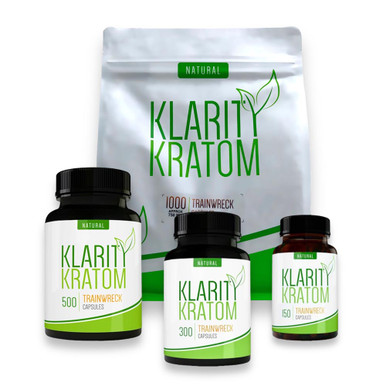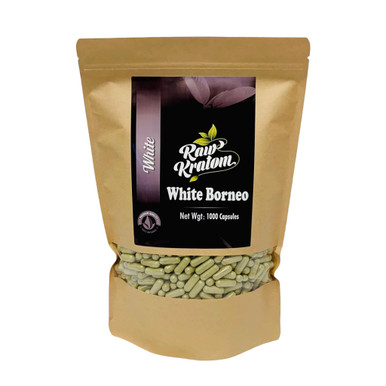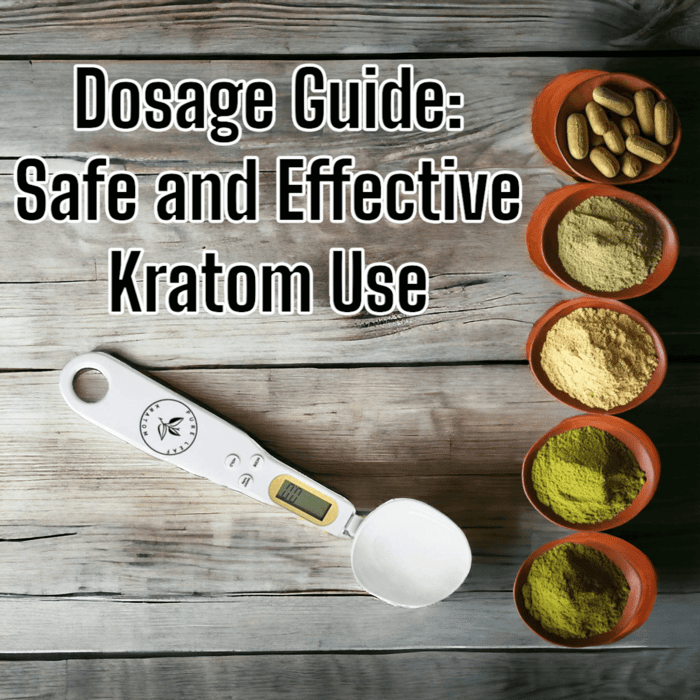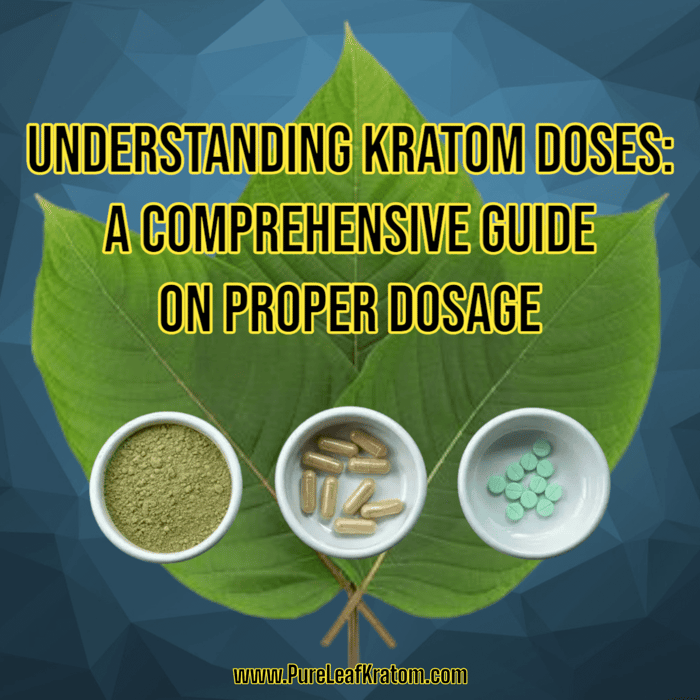
Kratom Dosage: A Comprehensive Guide to Optimal Kratom Use
Grasping the Essence of Kratom
To fully comprehend the concept of kratom dosage, one must first understand what Kratom is. Indigenous to Southeast Asia, Kratom is a tropical tree scientifically known as Mitragyna speciosa. Historically, the leaves of this tree have been used for centuries in traditional medicine to help counter fatigue, ease physical discomfort, and treat diarrhea. This regionally accepted practice seldom offered any side effects, predominantly resulting due to the use of fresh leaves or tea brewed from them source.
In more recent times, Western countries have taken a keen interest in Kratom. The leaves are now more commonly used in a dried, powdered form or as extracts, not only for a range of self-medication purposes but also for recreational use. Western users often turn to Kratom for mood enhancement, relief from pain, or handling opioid withdrawal symptoms source. However, the transition from traditional to non-traditional use, particularly the increase in concentrated commercial products, has led to a rise in reported side effects and instances of toxicity.
Key Alkaloids: The Core of Kratom's Efficacy
Understanding Kratom's potency and its subsequent effect on human health lies in decoding the makeup of the key alkaloids present within Kratom - Mitragynine and 7-hydroxymitragynine.
Mitragynine: The Principal Alkaloid
Mitragynine, the primary alkaloid found in Kratom leaves, plays a pivotal role in its overall effect. This compound is identified as being responsible for the majority of Kratom’s opioid-like effects, exerting its influence on the body's neurological system, thereby contributing to Kratom's pain-relieving capacity.
7-hydroxymitragynine: The Powerful Associate
7-hydroxymitragynine, although found in much smaller quantities, is noted for its significant potency. This alkaloid is in fact, substantially more potent than Mitragynine and is suggested to contribute the most towards Kratom’s analgesic, or painkilling effects.
Fully comprehending these alkaloids can provide a solid foundation towards understanding the effects and recommended kratom dosages, thereby promoting safer and more beneficial use.
Klarity Kratom Capsules Trainwreck

$14.99
Klarity Kratom Capsules Trainwreck Embark on a journey towards natural well-being with our meticulously curated Klarity Kratom Capsules Trainwreck blend. At Pure Leaf Kratom, we...… read more
Different Doses of Kratom
Deciphering the right kratom dosage, especially for beginners, might seem like a labyrinth. However, once decoded using the right insights, this maze turns immensely beneficial for the users. Let us navigate each kratom dosage, starting from the beginner dose right up to a higher dose.
Beginner Dose
If you are just stepping into the world of Kratom, a beginner's kratom dosage is the best way to start. As per this study, an ideal starting dose would be between 2-3 grams. Monitor your body response for 30-45 minutes before you plan on increasing the dosage. However, always remember, the mantra here is to keep things slow and avoid high doses above 5 grams.
Low Dose
A low Kratom dosage is rather subjective to the user's sensitivity and their body's reaction to the substance. Generally, this includes a consumption of 2-3 grams or 2-3 capsules (1-1.5 grams) much like the beginner’s dose. Understandably, someone with more exposure to Kratom might have different effects than someone just starting off. A low kratom dosage primarily promises an enhancement of your well-being and euphoria, be wary of high doses as overdose symptoms, including nausea and constipation, can be common at higher doses.
Moderate Dose
Staying within the boundaries of moderate kratom dosage ensures one reaps benefits, but does not edge towards any potential adverse effects. While it might seem intricate to draw this boundary, identifying a moderate dose can be labelled as the consumption up to 5 grams of Kratom. This dose promises to provide an energy boost while keeping the individual away from the unwanted side effects of a high dose. However, cautious and responsible use is advised.
High Dose
Winds of caution fly high when it comes to a high dose of Kratom. Any consumption above 5 grams falls into the high dose category. Users venturing into such territories should be privy of overdose risks, and in case of chronic usage, potential tolerance buildup. A high dose has its share of bonuses such as intense euphoria, a remarkable energy boost, and possible use as a sleep aid, but risks like nausea and constipation can accompany it.
Explanation of 'Gram Amount' in Kratom Dosage
As you dive deeper into the Kratom world, understanding the 'gram amount' turns pivotal. Essentially, it defines the weight of the Kratom being consumed at a single dose. Whether it's leaf powder, extract, or capsules, all are measured in terms of grams for strong efficacy. Simply put, keeping a close eye on the 'gram amount' can aid in averting problems like overdose or tolerance buildup.
Raw Kratom Capsules White Borneo

$69.95
Raw Kratom White Borneo Capsules Directly sourced and meticulously harvested from the fertile lands of Borneo, our Raw Kratom Capsules White Borneo introduce you to...… read more
Factors Influencing Kratom Dosage
Several factors can influence the correct Kratom dosage for an individual, including the vein color of the kratom leaf, the form it's prepared in, and the method of administration. Understanding these aspects plays an integral part in achieving the desired effect without adverse outcomes.
Variations in Vein color
The vein color of Kratom leaves generally falls under three categories - white, red, and green - which supposedly infers the strength and type of effect experienced. However, this classification has more to do with marketing than science and existing studies show little difference in alkaloid content between the vein colors.
That said, according to a survey of kratom users, users report distinct experiences with different vein colors. The white strain is often associated with increased stimulation and energy, followed by the green and red strains respectively. The variance in reported effects could be due to a combination of minor alkaloids or terpenes and the influence of user expectations and marketing claims. Irrespective of the vein color, it is crucial to start with a low dose and gradually adjust as needed.
Role of Leaf Preparation in Dosage Requirements
Different methods of leaf preparation can affect the potency of Kratom and, consequently, the needed dosage. Kratom comes in various forms, including extract, tincture, leaf powder, crushed leaf, and capsules. Each form yields a different concentration of active alkaloids, meaning the required dosage can vary extensively.
Leaf powder and crushed leaf are the most commonly used forms. Leaf powder usually entails more intensive processing, which could potentially increase the concentration of active alkaloids. A gram of leaf powder may, therefore, be more potent than a gram of crushed leaf, meaning a lower dosage would be required. Capsules, tinctures, and extracts often contain a pre-measured dosage, yet the potency can still vary, making it essential always to refer to the product's packaging for dosage information.
Impact of the Method of Administration on Dosage Needs
The method of Kratom administration can significantly impact the required dose. Most commonly, Kratom is either taken orally or made into a tea. However, the onset and duration of effect differ between these methods, potentially influencing the desired dosage.
When ingested orally, Kratom is subject to 'first-pass metabolism,' where it undergoes significant breakdown in the liver before entering the systemic circulation, thereby potentially reducing its effect. On the other hand, when made into tea, the active alkaloids are believed to be more readily available for absorption, potentially enhancing the effect and requiring a lower dose. The method of administration, along with vein color and leaf preparation type, should therefore be considered when deciding on a Kratom dosage.
Effects and Side Effects of Kratom
Kratom usage leads to a variety of desired outcomes and potential side effects, both dependant on the utilized dosage. User experiences can swing from euphoria, energy boost to relaxation or even act as a sleep aid with the optimal doses. Awareness of these effects, common side effects, and signs of overdose can equip users to utilise Kratom responsibly and safely.
Desired Outcomes
Euphoria
The role of dosage in achieving a sense of euphoria is evident from user testimonials. A low to moderate dose, usually between 1-5 grams, can trigger stimulant effects that encompass feelings of well-being, happiness, and euphoria. However, the subjective nature of these effects depends heavily on individual physiological responses and tolerance levels.
Energy Boost
Kratom, particularly at lower doses, is known for its stimulant attributes, acting as an excellent energy booster. Its alkaloid content, primarily mitragynine, acts on opioid receptors in the brain, producing stimulant effects. This, along with users' accounts, suggests a dose of 1-5 grams might offer an effective energy boost.
Sleep Aid
When administered as a sleep aid, Kratom influences neurochemical actions that promote sleep. Higher doses between 5-15 grams can produce sedative effects according to research data. However, extensive use can disrupt the sleep-wake cycle, manifesting as insomnia.
Relaxant
Higher doses of Kratom can also act as a powerful relaxant. The alkloid, 7-hydroxymitragynine, known for its analgesic and sedative effects, plays a substantial part in this. Generally, a dose between 5-15 grams can induce relaxation, mitigating stress and anxiety.
Recognizing and Managing Potential Side Effects
Kratom usage does come with its share of side effects, which commonly includes nausea, constipation, and dizziness. Awareness of these, alongside remedial measures, is crucial to individual use safety.
Common Minor Side Effects
Nausea and constipation are among the most common side effects encountered by Kratom users. Dizziness, too, is a frequently reported downside. Proper hydration, maintaining optimal dosage, and adjusting the taking method can help alleviate these discomforts.
Signs of Overdose
Although Kratom's overdose threshold is quite high when used solely, it significantly potentiates the effects of other substances and thus can lead to an overdose risk when combined. Overdose symptoms may include hallucinations, delusions and, in severe cases, seizures or even coma. Should any of these symptoms appear, immediate medical support and toxicology consultation are vital. Reducing the frequency of administration and tapering dose is a common remedial measure.
Overdose Risks and Importance of Safe Practices
Understanding Dose Frequency
The significance of 'Spacing Doses' cannot be understated when it comes to mitigating side effects. It ensures the body has time to process and remove the alkaloids from the system before the next intake. Its importance is paralleled with the 'Timing of Doses,' where the ingestion timing affects both the effectiveness and onset of side effects. Lastly, 'Dose Tapering' plays a prestigious role in managing risks and side effects, particularly in regular users who have built a degree of tolerance.
Relax Aid 150x Ultra Strength Kratom Extract Shot 10mL

$12.59
Relax Aid 150x Kratom Extract Shot 10mL Indulge in Ultimate Relaxation with this soothing kratom extract shot. At Pure Leaf Kratom, we are thrilled to...… read more
Comparison of Different Kratom Strains and Forms
Understanding the differences between Kratom strains and forms is key to determining an optimal dose. From vein color to the mode of administration, the vast range of options can significantly influence the user experience.
Different Strains of Kratom
The three primary strains of Kratom are white, red and green. Each possesses distinct traits and benefits, although the therapeutic effects of these strains are mostly influenced by dose size and individual subjectivity, rather than inherent chemical differences.
White Strain
Known for its energizing effects, the White strain is ideal for promoting focus and boosting productivity. It's recommended to start with a beginner dose, especially for new users, given its potent stimulation. An online survey found that the higher the white strain dosage, the more significant the effects, particularly for motivation and concentration. However, these results may be impacted by marketing claims and user expectations, as there were no significant differences in alkaloid content between the strains.
Red Strain
Perfect for relaxation and pain relief, the Red strain is generally the most potent among the strains and often recommended for first-time users seeking to manage discomfort. Higher doses usually lead to more sedative effects. Use caution when increasing dosage as red strains are reportedly more constipating than their counterparts.
Green Strain
The Green strain offers a balanced blend of the benefits attributed to the red and white strains. Green strain Kratom can boost both energy and relaxation, making it a versatile choice for many users.
Different Forms of Kratom and Their Role in Dosage
Kratom comes in several prepared forms, each impacting the optimal dosage recommendation.
Kratom Extract
Kratom extract is a concentrated form of the substance and is often stronger than other preparations, thus requires smaller doses. However, its concentration can lead to faster development of tolerance if not consumed in moderation.
Tincture
Tinctures offer the benefits of being easy to use and fast-acting. They come in convenient dropper bottles, but accurate dosing can be tricky, especially for beginners. As with extracts, tinctures are more concentrated, thereby escalating the risk of tolerance buildup.
Leaf Powder
The most common form of Kratom is the leaf powder, which allows for easy measuring of doses. It's versatile, easy to use, and provides a potent effect. However, its slower onset of action compared to extracts and tinctures is a downside for some users.
Crushed Leaf
Crushed leaf Kratom is less common than powder and is often brewed as a tea. It offers a less intense effect, which can be beneficial for beginners or those prone to sensitivity. The downside is that dose adjustment can be less precise since it's difficult to measure leaf volume accurately.
Capsules
Capsules offer a convenient, mess-free way to enjoy Kratom. They provide exact dosages, which helps reduce the risk of developing tolerance. However, capsules often take longer to exert their effects due to the additional digestion process involved.
The Role of Potentiators in Kratom Dosage
Potentiators are substances that enhance the efficacy of Kratom, allowing for reduced dosage, and potentially limiting tolerance buildup. Potentiators can vary from common foods, like grapefruit juice, to prescribed medications. As they can enhance both the desired and undesired effects of Kratom, it's crucial to understand their impact and use them responsibly.
Kratom for Chronic Pain Management
Kratom, due to its analgesic properties, has become an alternative method for managing chronic pain. Depending on the severity of the pain, the kratom dosage can range from low, moderate to high. However, one must approach pain management with kratom responsibly, paying attention to routine and dosage to prevent tolerance buildup and potential withdrawal symptoms.
Identifying Appropriate Dose Routines
Knowing how often to take kratom is as important as the dosage itself. To manage chronic pain, most users administer kratom 'Once Daily', 'Twice Daily', or 'Three Times Daily' based on the level of pain relief required.
'Once Daily' use may offer enough pain relief for mild chronic conditions, ensuring consistent analgesic effects throughout the day. 'Twice Daily' usage may be suitable for moderately severe pain, providing comfort in the morning and evening. For severe chronic pain, 'Three Times Daily' use might be effective, delivering substantial relief at regular intervals across the day. It's worth noting, dosages of at least 5 grams taken 22 or more times per week are more likely to be effective for pain relief but are also more likely to cause mild side effects.
Addressing Challenges with Chronic Use
Chronic use of kratom is not without its challenges. Besides reducing pain, users may face the dual issues of possible tolerance buildup and withdrawal symptoms. Understanding these challenges is crucial for safe and effective kratom use.
Understanding Tolerance Buildup
Tolerance buildup occurs when your body gets accustomed to the regular intake of kratom, which in turn reduces the drug's effectiveness. Frequent higher doses can stimulate the onset of this tolerance, leading to the need for increased dosages to achieve the same effect.
Preserving the optimal balance between satisfactory pain relief while minimizing side effects and preventing tolerance buildup involves a careful observation of your body's reactions and making necessary adjustments. This could mean employing methods such as dose tapering or altering the frequency of use.
Preparing for Withdrawal Symptoms
Withdrawal symptoms can occur when stopping long-term kratom use, presenting another challenge with chronic use. However, most withdrawal symptoms are mild and short-lived, resolving within a few days. Some users may experience severe or longer-lasting withdrawal symptoms, including physical discomfort or unusual symptoms.
Being prepared for these potential symptoms means not only understanding what they may be, but also knowing how to manage them. Measures to mitigate withdrawal symptoms include reducing the dose gradually, also known as slow taper, to allow your body to adjust to the reduced kratom intake over time.




